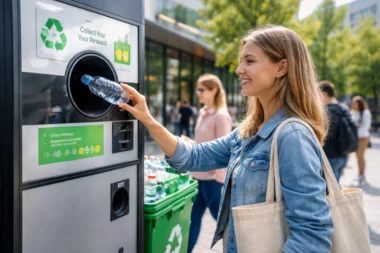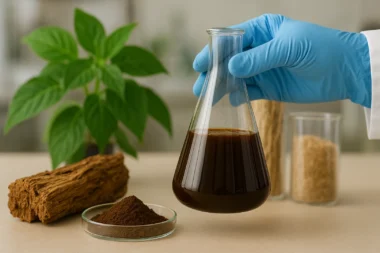Introduction
In the quest for sustainable and eco-friendly construction practices, CarbonCure technologies have emerged as a groundbreaking solution for reducing carbon dioxide (CO2) emissions in the concrete industry. This in-depth report aims to comprehensively understand CarbonCure technologies, including their mechanisms, applications, and utilization in concrete production. Through a step-by-step guide, readers will gain insights into the details of CO2 technology and its transformative impact on the concrete manufacturing process.
1. Understanding CarbonCure Technologies
CarbonCure technologies involve capturing and utilizing carbon dioxide gas to enhance concrete production. The process typically involves the following steps:
a. CO2 Capture: Industrial sources, such as power plants or cement production facilities, capture carbon dioxide. The captured CO2 is then purified and prepared for integration into the concrete production process.
b. Injection into Concrete Mix: The purified CO2 is injected into the concrete mix during the batching phase. The CO2 chemically reacts with calcium ions in the cement to form solid calcium carbonate permanently embedded within the concrete structure.
2. Applications of CarbonCure Technologies
CarbonCure technologies offer numerous benefits and applications within the concrete industry.
a. Reduced Carbon Footprint: By permanently storing CO2 within concrete structures, CarbonCure technologies help reduce the construction industry’s carbon footprint. This contributes to global efforts to mitigate climate change and reduce greenhouse gas emissions.
b. Enhanced Concrete Performance: Integrating CO2 into the concrete mix improves the material’s compressive strength, making it more durable and resistant to cracking. Additionally, the carbonation process enhances the overall quality and longevity of the concrete.
c. LEED Certification: Using CarbonCure technologies in concrete production can contribute to obtaining Leadership in Energy and Environmental Design (LEED) certification, a globally recognized symbol of sustainability achievement in building design and construction.
Step-by-Step Process: Integrating CarbonCure Technologies in Concrete Production
The process of utilizing CarbonCure technologies in concrete production involves the following steps:
a. CO2 Sourcing: Carbon dioxide gas is sourced from industrial facilities, such as power plants, where it is captured from their emissions. The captured CO2 is then purified to meet the required specifications.
b. CO2 Delivery and Storage: The purified CO2 is transported and stored in tanks or containers at the concrete production site. These storage systems ensure the safe and efficient handling of the captured CO2.
c. Concrete Batching: Concrete production begins with batching, combining the necessary components. Depending on the project requirements, this typically includes cement, aggregates (such as sand and gravel), water, and other additives.
d. CO2 Injection: The purified CO2 is injected into the concrete mix once the ingredients are mixed. This is typically done during the mixing stage, where the CO2 is introduced to ensure thorough distribution and integration with the other components.
e. Mixing and Testing: The concrete mix, including the injected CO2, is thoroughly mixed to achieve a homogeneous mixture. Quality control tests are conducted to ensure carbonated concrete’s consistency, strength, and performance.
f. Concrete Placement: The carbonated concrete is ready for placement and construction. It can be poured, molded, or applied according to the project requirements, following standard industry practices.
Components and Technology Used in CarbonCure Technologies
CarbonCure technologies rely on specialized components and technology to facilitate the integration of CO2 into concrete production.
a. CO2 Delivery Systems: These include storage tanks, pipelines, and delivery mechanisms that transport the captured CO2 from the storage site to the concrete batching plant.
b. Injection Equipment: CarbonCure utilizes advanced injection equipment, such as injectors and mixing systems, to effectively introduce CO2 into the concrete mix. The equipment ensures a precise and uniform distribution of CO2 throughout the mixture.
c. Monitoring and Control Systems: CarbonCure technologies employ sophisticated monitoring and control systems to regulate the CO2 injection. These systems monitor the flow rate, pressure, and other parameters to ensure accurate and consistent injection.
d. Data Analytics and Reporting: CarbonCure utilizes data analytics and reporting tools to monitor and analyze the performance of carbonated concrete. These tools provide valuable insights into the carbonation process, quality control, and overall sustainability of concrete production.
Implementation of CarbonCure Technologies in Concrete Production
Implementing CarbonCure technologies in concrete production involves several key considerations and steps to ensure successful integration and maximize the benefits of CO2 utilization. Here are some essential aspects to consider during implementation:
1. Evaluation and Planning: Conduct a thorough evaluation of the project requirements, including the desired concrete performance, CO2 reduction goals, and feasibility assessment. Collaborate with experts familiar with CarbonCure technologies to determine the applicability and suitability of the technology for the specific project.
2. Training and Education: Provide training and education to the concrete production team regarding implementing and operating CarbonCure technologies. This includes understanding the CO2 injection process, equipment usage, quality control procedures, and safety protocols.
3. Site Preparation: Prepare the concrete production site to integrate CarbonCure technologies. This may involve creating space for CO2 storage tanks, installing pipelines, and ensuring the availability of the necessary infrastructure to support the technology’s implementation.
4. Collaboration with Suppliers: Collaborate with CO2 suppliers to establish a reliable source of high-quality CO2. Ensure proper coordination for the on-site delivery and storage of CO2, adhering to safety regulations and guidelines.
5. Equipment Installation and Calibration: Install the necessary equipment, including CO2 delivery systems, injection equipment, and monitoring and control systems. Calibrate the equipment to ensure accurate CO2 injection and optimal performance.
6. Testing and Quality Control: Conduct comprehensive testing and quality control procedures to verify the performance and consistency of the carbonated concrete. This may involve conducting lab tests, evaluating compressive strength, and monitoring the curing process.
7. Monitoring and Optimisation: Implement a monitoring system to track the performance and environmental benefits of the carbonated concrete. Continuously monitor CO2 emissions reduction, energy consumption, and concrete properties to identify areas for optimization and improvement.
8. Documentation and Reporting: Maintain detailed records of the CO2 utilization process, including CO2 volumes injected, concrete production data, and environmental impact measurements. Use this information to generate reports and communicate sustainability achievements to stakeholders.
9. Continuous Improvement and Innovation: Stay informed about advancements in CarbonCure technologies and related research. Seek opportunities to optimize the implementation process, improve concrete performance, and explore new applications or collaborations.
Case Study: CarbonCure Technologies Implementation at a Concrete Company
Project Details:
- Location: Concrete Company, a leading concrete producer in a metropolitan area
- Implementation Period: January 2022–December 2022
- Goal: Reduce carbon dioxide emissions and improve sustainability in concrete production.
Implementation Steps:
1. Feasibility Assessment: The Concrete Company conducted an internal evaluation and collaborated with CarbonCure experts to assess the feasibility of implementing CarbonCure technologies in their production facility. The assessment confirmed the potential for emissions reduction and improved sustainability.
2. Technology Integration: The necessary equipment, including CO2 delivery systems, injection equipment, and monitoring and control systems, was installed and calibrated at the Concrete Company facility. The plans were seamlessly integrated into the existing production process.
3. Training and Education: The concrete production team at Concrete Company received comprehensive training on CarbonCure technologies, covering CO2 injection techniques, equipment operation, and quality control procedures.
4. CO2 Sourcing: Concrete Company partnered with a local industrial facility to source purified CO2, ensuring a consistent and sustainable supply for their carbonation process.
5. Production Trials: The Concrete Company conducted trials to optimize the CO2 injection process and fine-tune the concrete mixtures to achieve the desired performance and durability.
6. Quality Control and Testing: Rigorous quality control measures were implemented to monitor the performance of the carbonated concrete, including compressive strength testing, durability assessments, and compliance with industry standards.
7. Performance Monitoring: The Concrete Company installed a monitoring system to track CO2 emissions reductions, energy consumption, and the environmental impact of their carbonated concrete production.
Results and Benefits:
1. CO2 Emissions Reduction: By implementing CarbonCure technologies, Concrete Company significantly reduced CO2 emissions. Over one year, they reduced their carbon footprint by 20%, equivalent to approximately 5,000 metric tonnes of CO2 emissions.
2. Improved Sustainability Credentials: Integrating CarbonCure technologies allowed Concrete Company to enhance its sustainability credentials and meet the growing demand for environmentally friendly construction materials. They obtained certifications and recognition for their commitment to sustainable practices.
3. Improved Concrete Performance: The Concrete Company’s concrete now has greater compressive strength and durability due to the carbonation process. The carbonated concrete exhibited excellent performance in various construction projects, increasing customer satisfaction and reducing maintenance requirements.
4. Cost Savings: Despite the initial investment in technology and equipment, Concrete Company realized long-term cost savings through reduced energy consumption and enhanced efficiency in the concrete production process.
5. Industry Leadership and Collaboration: The successful implementation of CarbonCure technologies positioned Concrete Company as a leader in sustainable concrete production. They actively shared their experiences and collaborated with other industry players to promote the adoption of similar technologies and drive positive change within the substantial sector.
This case study highlights the benefits of implementing CarbonCure technologies at Concrete Company. By reducing CO2 emissions, improving sustainability, and enhancing concrete performance, they demonstrated their commitment to environmental stewardship and positioned themselves as a sustainable leader in the industry.
Conclusion
CarbonCure technologies offer an innovative approach to reducing CO2 emissions and enhancing concrete performance in the construction industry. The step-by-step guide outlined integrating CarbonCure technologies into concrete production, emphasizing the sourcing and storage of CO2, CO2 injection, mixing, and quality control.
CarbonCure’s parts and technology, like CO2 delivery systems, injection equipment, monitoring and control systems, and data analysis tools, are very important to ensure that CO2 is used efficiently and effectively in making concrete.
By adopting CarbonCure technologies, the construction industry can make significant strides in achieving sustainability goals, reducing carbon footprints, and building a more resilient and environmentally conscious future.



